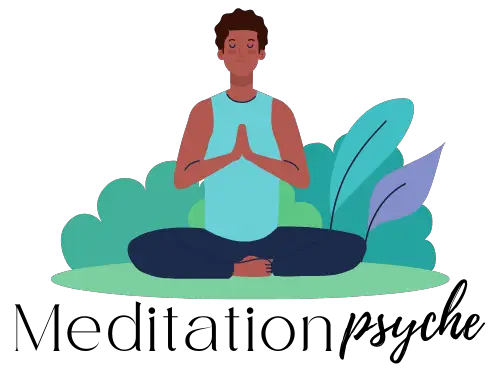You may know that when you start learning a new skill, it always seems difficult initially, but when you put enough effort, it becomes doable and gets converted into a habit.
This same is true for meditation. At the start, it’s challenging and tough to maintain a consistent practice of meditation, but once you meditate for fairly hours, it cultivates into a habit and gives you the benefits of your hard work.
So, It’s important to meditate daily because you are cultivating a habit that will improve your well-being and benefit you in many ways. (Read: Meditation & Mindfulness Benefits)
To do so, It’s better to find your motivation and purpose for meditation which always insists you to practice meditation.
Many enthusiast people start meditation or mindfulness, but soon when they don’t find any benefit, they give up and make X&Y excuses.
So when you start meditation, make sure you have an unbeaten mindset and fail-proof plan that never fail.
Starting meditation is easy, but sustaining it for a long time requires self-discipline and a proper routine.
When I began meditation, I was backed by the strong motive to improve my well-being and progress on the spiritual path.
Also, I tried many plans to cultivate the habit of meditation that never let me wander off from the track.
In this article, we will discuss, How you can start a meditation practice that sticks lifetime and How you can cultivate your meditation as a daily habit.
Here’re the following tips that may make your meditation practice easy and robust.
1) Find your purpose for meditation

All good things start with a reason, start with a strong WHY? And If you have no reason for your action, you may lose motivation very soon.
I think people who join meditation have plenty of reasons and problems for which they are finding solutions. They come to meditation and mindfulness when they have tried all tips and tricks, isn’t it?
According to a survey, most people start meditation to overcome their mental stress, anxiety, or sleep-related problems. Although, meditation can solve these problems along with many others.
So to create a meditation habit, you should have at least one strong purpose.
2) Choose a meditation technique
One meditation technique could not fit all, and What looks perfect for one may not be so good to others.
Hence, many meditation techniques have been developed by considering different traits of people.
So, try different meditation technique and then choose one which suits you most and practice it regularly.
Remember, don’t change your meditation technique frequently that will lead you nowhere.
However, there is no such technique as best or very best, and also there no such thing as hard or easy. All techniques are perfect in their places. It’s all about with which you can be comfortable most.
Related Article: 7 Reasons That Make Meditation Harder
So, take some time to find your match, and if you are still confused, put everything aside and start practicing the guided meditation.
3) Set trigger
The trigger is useful for cultivating a meditation habit and giving a signal to your brain for meditation practice.
If you set the trigger and follow a meditation routine, over time, It organizes a certain pattern in your brain and establishes a habit of meditation.
This trigger can be your normal activities such as 6 AM alarm, morning workout, taking a bath, or having tea or coffee, after which you are initiated to practice meditation.
So choose one trigger for your meditation and once it’s on, start meditation without any excuse. Over the time, it will cultivate a meditation habit in you.
4) Allot a fixed time
Every day meditate at the same time and don’t change it frequently, and this will help you develop the habit.
For instance, if you don’t allot a particular time and say, “I will meditate when I am free.” then let me remind you that you have said this many times in the past, but how many times did you follow it?
So, stop playing this type of mind game and promise yourself with fixed time to meditate.
If you wake up early, then morning between 4-6 AM is the best time for meditation or if you are the nigh owl and wake up late, then before going bed or evening time is best for your practice.
So allot a specific time and meditate daily on that same will help you develop a meditation habit.
5) Find the perfect spot
A noisy or booming spot will not let you go deep in meditation, so you should meditate at a place where distractions are zero or very less.
As a beginner, it’s essential to lessen your distractions at zero or a minimum level to deepen your meditation experience.
Meditate in your private room or at a place where people and technology cannot disturb you.
As a beginner, it’s essential to lessen your distractions at zero or a minimum level to deepen your meditation experience.
If you don’t have this type of place, then simply wake up early when others are sleeping and practice meditation.
6) Start with a short session
You may have seen a Buddhist monk in movies meditating for hours and hours without changing his position.
By seeing him, you might have thought that meditation is the practice of long sitting in one position.
But, do you know many studies have proved that even daily brief meditation sessions of 10-15 minutes may bring positive change in brain functioning and well-being.
Here more, you need is consistent practice, not a long sitting. If you can sit too long, but your mind and body are not with you, then it’s worthless meditation.
So focus on consistency, focus on cultivating a habit of meditation.
Thus, in the beginning, meditate according to your convenience without forcing your body & mind. Start meditation with 5-10 minutes a day or even less, but be consistent and regular with it.
When you become comfortable enough to stretch the meditation session time, then gradually add 2-3 minutes in every week.
7) Get started
It’s time to take real action; it’s time to build a meditation routine. When everything above is set, then it’s time to practice your favorite meditation technique.
However, each meditation technique is different in the way of doing it, but here I will provide common suggestions on how to set up your meditation position and efficiently perform the practice.
To practice meditation, you have to sit in a certain way to balance and stabilize your practice.
There are several different meditation postures such as crossed leg, sitting, and kneeling; choose anyone according to your conventions and make sure it allows you to sit comfortably for 10-15 minutes.
Image credit: The way of meditation
If you need more comfort, then use a meditation cushion or meditation chair. It will keep your body relaxed and chill, so you meditate better and longer.
If someone is uncomfortable sitting on the floor and needs back support, one can use a meditation chair with back support.
Review Post: 8 Best Meditation Chairs Seniors
The point here is to make your practice comfortable and settle. If your body is relaxed and unmoving, then naturally, you may get control over your mind to some extend.
So till now, I hope you are clear with the purpose of meditation, and you have your preferred meditation place and time, meditation technique, and meditation posture.
Now it’s time to dive into the meditation practice.
Steps to practice meditation:
(Here, I have explained the steps to practice mindfulness meditation. You can also do your chosen meditation by referencing these steps)
- Move yourself to a place where distractions are zero or minimum
- Sit in your chosen cross-legged or other meditation posture with your spine comfortably erect and eyes closed (support your seat with a meditation cushion, and your back with a meditation chair for a more stable position)
- Now slowly take 5-6 deep breaths with counts 1-3 (with inhalation, pause, exhalation, pause)
- Next, pay attention to your natural breathing, be aware of the inhalation and exhalation process, sense the touch of air at nostrils and the movement of air coming in and out, also you can notice the movement of your belly expanding contracting. (It’s a mindfulness practice of observing what we are doing and what is happening around us without making any judgments)
- Along with this mindful breathing, you can observe the sensations happening in your body, these sensations can be any kind from gross to subtle to very subtle. Objectively observe them and don’t make any judgment regarding them.
This way, you can practice any meditation technique.
When you try to focus your mind on meditation, it is often carried away by thoughts and wild imaginations.
This happens more with beginners because they never practice concentration or try to control their minds, but that’s normal. Everyone novice and intermediate meditator face this problem too.
When your attention is carried away, or somehow you can’t be able to meditate, then don’t get frustrated; otherwise, the situation will get worse.
One simple and wise solution is that when you realize you are derailed and distracted by thoughts, then gently bring your attention back to the meditation practice as if nothing happened.
Be kind with your monkey mind; rumbling is its nature, so accept this conditioning and consider it as your best friend. However, your mind needs the training to dig out gold from yourself.
8) Make yourself comfortable

As we have discussed, your body and mind need comfort, especially when you start a meditation journey, because meditation is a new practice for your body & mind, and they need adjustments and solace.
If you find meditation hard, then uncomfortably could be one reason and it should be subdued.
Unfortunately, we have no tools or arrangements to make your mind comfortable, but fortunately, we have so many things to comfort your body, but the best part is when you make your body relaxed and adjusted, your mind may become stable and balanced too.
Here, I recommend you use a meditation cushion to support your side feet, ankles, and overall seat. Also, you can use a meditation chair with back support for a more comfortable sitting position with easy back support.
With cushion under your hips will create a natural erect spine which helps to sit longer in certain meditation poses without hurting your lower back.
9) Reward yourself
Once you have meditated and followed your routine, then reward yourself.
This simple trick will help to cultivate a meditation habit.
When you give yourself a pleasing reward after completing meditation, the very next day, your mind will remind you to practice meditation for a reward.
Thus, This will keep you on track, and whenever you follow this routine and reward game, your meditation habit will get stronger and better.
Remember, your reward should be little and healthy, like eating your favorite fruit, food, juice, etc. A too stimulative reward will develop its own addiction and may difficult for you to overcome it.
This reward thing is not compulsory. If you can follow a meditation routine without rewarding yourself, then it’s great. This is for those who want to meditate daily but can’t manage it.
10) Join a community

Having a company of like-minded people always helps us to grow in any field, their support and association help us to solve problems, share new ideas, and gain motivation.
If you have a local meditation center near your residence, then you should join it and be a part of that community.
This will help you learn meditation from an expert teacher and build relationships with others with whom you can share your ideas and experiences.
However, if you don’t have a nearby meditation center, join FB groups or any other online meditation community; this will help you stay motivated.
11) Face demotivation
Once you start meditation, ups and downs will come. Some days you feel super pumped up, and other days you feel degraded. That’s life, isn’t it?
We all are on the roller coaster of life, and all days can never be the same. So face your loose days, motivate yourself using your intellect and take help from people or a community.
When you are demotivated, remind yourself a purpose or benefits for which you are practicing meditation. Ask yourself questions, Do I want to improve my well-being? Do I want freedom from stress, anxiety, or depression?
Remember that don’t contemplate your demotivated mood and don’t make excuses for not practicing meditation.
Although how to face demotivation is totally depends on you, you have to learn and master the art of self-motivation.
By the way, I have been applying these tips for the last 4-5 years, and they have changed my life completely.
By implementing these tips, I have developed life long meditation habit which never loses momentum.
I am confident that if you apply these strategies to your meditation practice, you will develop an unshakable meditation routine and progress in your practice.
Once you succeed in making this happen, you will bear the fruits of your work; all possible health benefits will come in your life.
So, put these tips into work and take action because success comes from hustling, not merely from thinking.
I hope you also can practice meditation daily and cultivate the habit of meditation.
All the best, and keep meditating.

